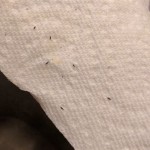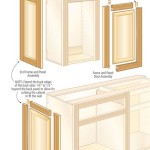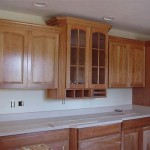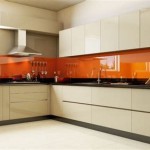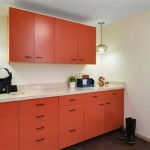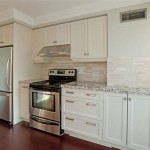High Gloss White Spray Paint for Kitchen Cabinets and Doors: A Comprehensive Guide
Refinishing kitchen cabinets and doors with high gloss white spray paint offers a cost-effective and aesthetically pleasing alternative to complete replacement. This approach not only revitalizes the appearance of a kitchen but also allows for personalization and modernization of existing cabinetry. The decision to use high gloss white specifically brings a sense of brightness, cleanliness, and spaciousness to the room. The application process, however, requires careful planning, preparation, and execution to achieve a professional and durable finish.
High gloss white paint reflects light exceptionally well, making it ideal for smaller kitchens or those with limited natural light. Its smooth, reflective surface is also relatively easy to clean, a significant advantage in a high-traffic area like the kitchen. This article provides a detailed exploration of the benefits, preparation techniques, application methods, and considerations involved in utilizing high gloss white spray paint for kitchen cabinets and doors.
Understanding High Gloss White Spray Paint: Properties and Advantages
High gloss paint differs significantly from other paint sheens, such as matte, eggshell, or satin. The defining characteristic of high gloss is its high light reflectance value (LRV), meaning it reflects a significant portion of the light that hits its surface. This reflectance contributes to the perceived brightness and clarity of the color, making rooms appear larger and more open.
The high resin content in high gloss paint is responsible for its durability and sheen. This higher concentration of resin creates a hard, non-porous surface that is resistant to scratches, stains, and moisture. These properties make high gloss paint a suitable choice for kitchen cabinets and doors, which are frequently exposed to spills, splatters, and humidity. Regular cleaning is also simplified, as spills and dirt can typically be wiped away with a damp cloth.
However, the high reflectivity of high gloss paint also highlights imperfections in the surface it is applied to. Any dents, scratches, or unevenness will be more noticeable than with a lower sheen paint. Therefore, thorough surface preparation is crucial when using high gloss paint to ensure a flawless final result.
Furthermore, the choice between different types of high gloss white spray paint – such as oil-based (alkyd), water-based (acrylic), or lacquer – will influence the application process, drying time, and overall durability. Oil-based paints generally offer superior durability and a smoother finish but require more effort to clean and have stronger odors. Water-based paints are easier to clean, dry faster, and have lower VOC (volatile organic compounds), making them a more environmentally friendly option. Lacquer paints provide a very hard and durable finish, often used in professional cabinet refinishing, but require specialized equipment and ventilation due to their high solvent content.
Selecting the right type of high gloss white spray paint necessitates considering the specific requirements of the project, the available equipment, and the level of experience of the individual undertaking the refinishing process.
Preparing Kitchen Cabinets and Doors for High Gloss White Spray Paint
Proper preparation is paramount to achieving a professional-looking finish with high gloss spray paint. This process involves several key steps, including removal, cleaning, sanding, priming, and masking.
First, all cabinet doors and drawers should be removed from the cabinet frames. Labeling each door and drawer with its corresponding location is essential to ensure proper reinstallation. Remove all hardware, such as hinges, knobs, and pulls. Store these items securely, and consider replacing them with new hardware to further enhance the updated look of the cabinets.
The next step is thorough cleaning. Use a degreasing cleaner to remove any grease, grime, or food residue from the surfaces of the cabinets and doors. Grease is particularly challenging for paint to adhere to, and failing to remove it will result in peeling or blistering. Rinse the surfaces thoroughly with clean water and allow them to dry completely.
Once the surfaces are clean and dry, sanding is required. Sanding serves two primary purposes: to create a slightly rough surface that the primer can grip and to smooth out any existing imperfections. Use a medium-grit sandpaper (around 120-180 grit) to sand the entire surface of the cabinets and doors. Pay particular attention to edges and corners. After sanding, wipe down the surfaces with a tack cloth to remove all sanding dust. This dust, if left behind, will compromise the smoothness of the final finish.
Priming is an essential step in the preparation process. A high-quality primer creates a uniform surface for the paint to adhere to and seals the wood, preventing tannins or stains from bleeding through the topcoat. Apply a thin, even coat of primer using a brush, roller, or spray gun. Allow the primer to dry completely according to the manufacturer's instructions. Once dry, lightly sand the primed surface with a fine-grit sandpaper (around 220 grit) to smooth out any imperfections. Again, wipe down the surfaces with a tack cloth to remove any dust.
Finally, masking is crucial to protect surrounding areas from overspray. Use painter's tape and plastic sheeting or drop cloths to cover any areas that you do not want to be painted, such as walls, countertops, appliances, and flooring. Proper masking ensures a clean and professional finish.
Applying High Gloss White Spray Paint: Techniques and Considerations
The application of high gloss white spray paint requires careful attention to detail and proper technique. Whether using aerosol cans or a professional spray gun, the principles remain the same: apply thin, even coats and avoid runs or drips.
Before beginning, ensure adequate ventilation in the work area. High gloss spray paint, particularly oil-based or lacquer-based paints, can release harmful fumes. Wear a respirator and eye protection to protect yourself from these fumes and overspray.
If using aerosol cans, shake the can thoroughly according to the manufacturer's instructions. Hold the can approximately 10-12 inches from the surface and apply the paint in a smooth, even, back-and-forth motion. Overlapping each pass slightly will ensure complete coverage. Avoid holding the can in one spot for too long, as this will result in runs or drips. Aim for a thin, even coat of paint.
When using a professional spray gun, thin the paint according to the manufacturer's recommendations. This is crucial for achieving a smooth, even spray pattern. Adjust the spray gun settings to achieve the desired fan width and paint flow. Practice on a piece of cardboard or scrap wood to get a feel for the gun and adjust the settings as needed. Apply the paint in thin, even coats, overlapping each pass slightly. Maintain a consistent distance from the surface to ensure uniform coverage.
Allow the first coat of paint to dry completely according to the manufacturer's instructions. Once dry, lightly sand the surface with a fine-grit sandpaper (around 320-400 grit) to remove any imperfections or dust particles. Wipe down the surfaces with a tack cloth to remove any dust before applying the second coat.
Apply a second coat of high gloss white spray paint using the same technique as the first coat. This second coat will provide full coverage and enhance the sheen of the paint. Allow the second coat to dry completely before handling the cabinets or doors.
Depending on the desired level of gloss and coverage, a third coat may be necessary. If applying a third coat, repeat the sanding and cleaning process after the second coat has dried completely. Allow the final coat to cure fully before reinstalling the cabinets and doors. Curing typically takes several days or even weeks, depending on the type of paint used.
After the paint has fully cured, carefully remove the masking tape and plastic sheeting. Reinstall the hardware and reattach the cabinets and doors to the cabinet frames. Adjust the hinges as needed to ensure that the doors hang properly.
Applying high gloss white spray paint to kitchen cabinets and doors is a labor-intensive process, but the results can be transformative. With careful planning, proper preparation, and meticulous application, it is possible to achieve a professional-looking finish that revitalizes the kitchen and adds value to the home.

Kitchen Spray Painting For A Fresh New Look The Facelift Company

Kitchen Spray Painting For A Fresh New Look The Facelift Company

Best Kitchen Cabinet Paint Finish For Professional Results Pennies A Fortune

Behr Premium 1 Qt 52 White Semi Gloss Enamel Interior Exterior Cabinet Door Trim Paint 712004 The Home Depot

Can You Spray Paint High Gloss Kitchen Doors Pentura Pro

Can You Spray Paint High Gloss Kitchen Doors Pentura Pro

Kitchen Spraying Spray Tech

Can You Spray Paint High Gloss Kitchen Doors Pentura Pro
Transform Your High Gloss Kitchen Into A Sleek Matt Finish With Spraying

Modern 2 Pac High Gloss White Lacquer Painting Kitchen Cabinets With Pantry Baskets Cabinet Furniture Made In China Com
Related Posts

